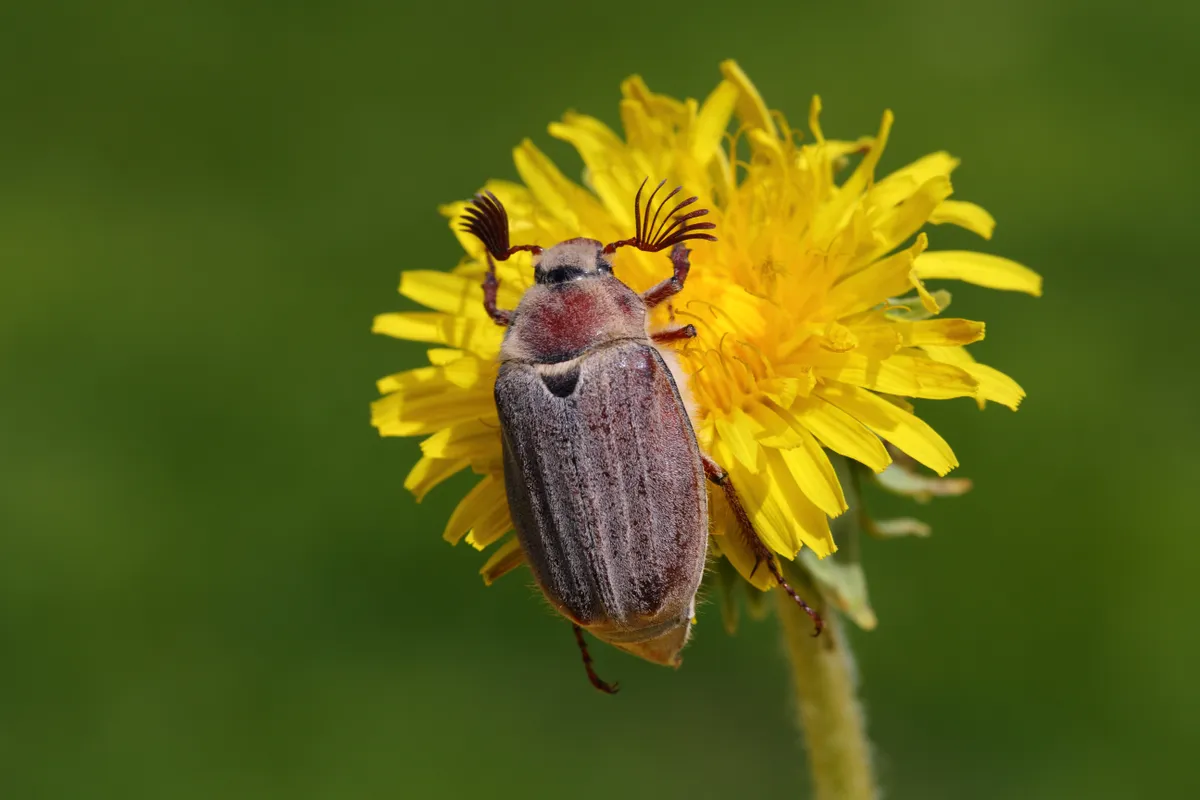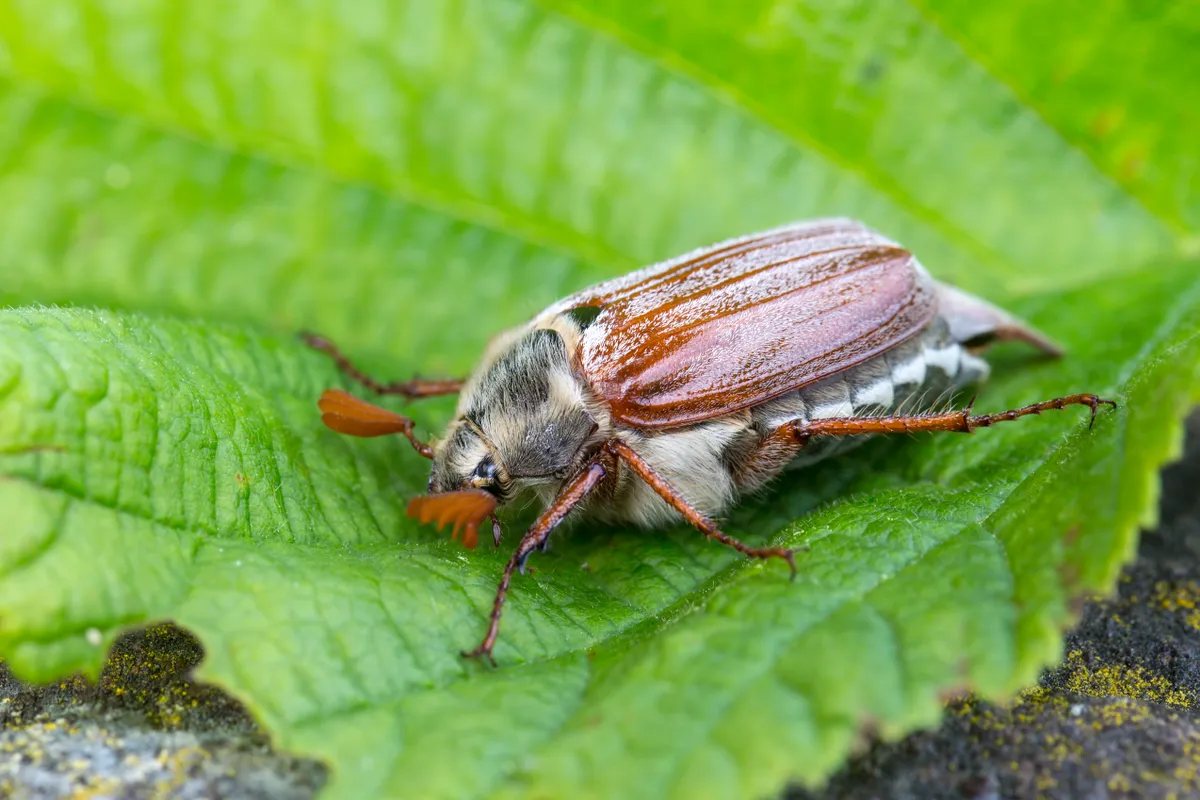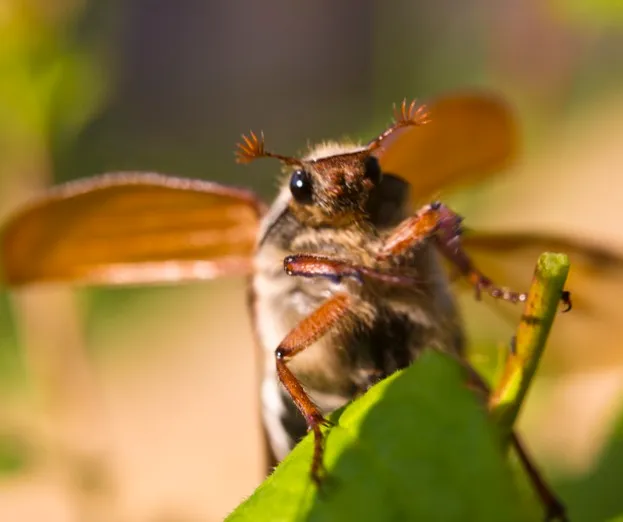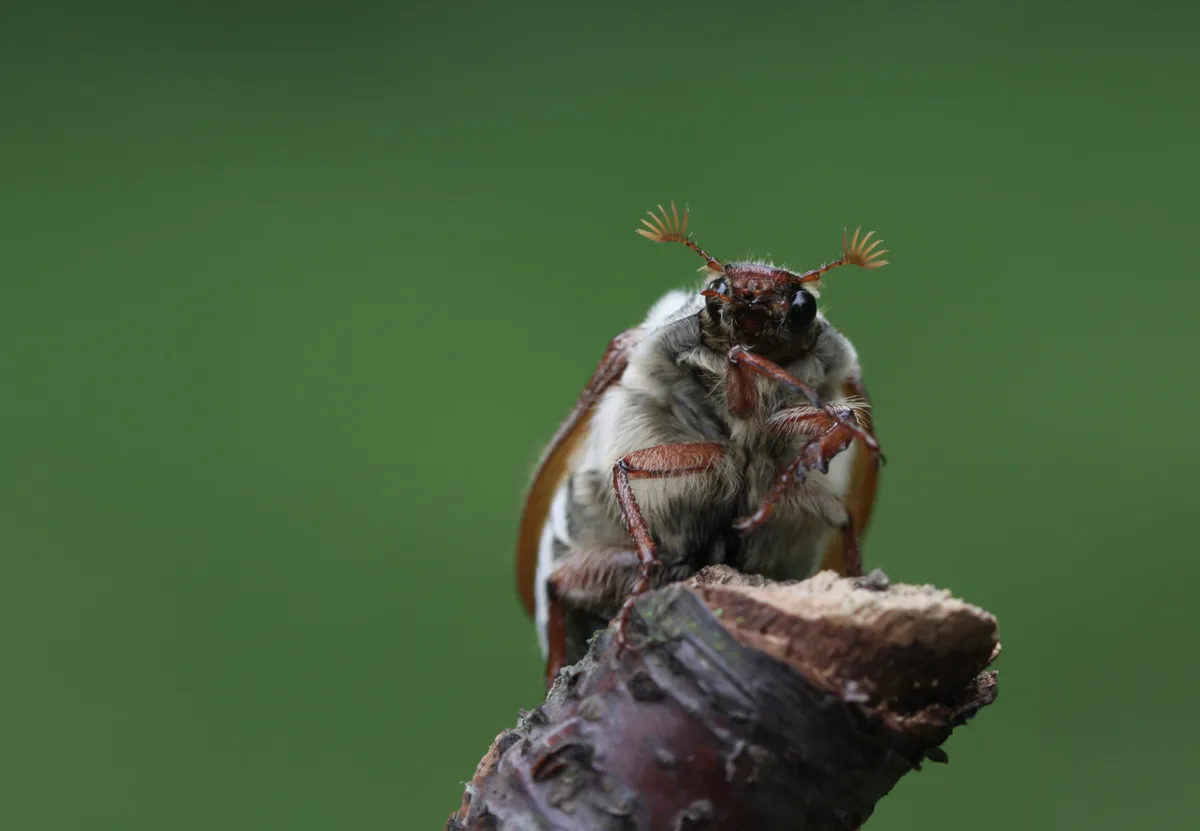Cockchafers have caused their fair share of historical surprises, in 1320, an Avignon court sentenced cockchafers to exile in a special reserve – the beetles did not comply. In 1574, cockchafers emerged in such numbers in the Severn valley that the volume of carcasses disabled watermills!
What is a cockchafer?
A cockchafer is a type of large, flying beetle that can be quite noisy. The cockchafer is sometimes called a 'doodle-bug' or May bug, although it is in fact a beetle.
There are two species of cockchafer found in the UK: the common cockchafer (Melolontha melolontha) which is found in the south of the UK, and the northern cockchafer (Melolontha hippocastani) which is found in northern England, Scotland and Ireland.
The common chafer's scientific name, Melolontha melolontha, is an example of a tautonym, where the genus and specific name are the same.

When's the best time to see cockchafers?
One of Britain’s bulkiest beetles, the 3-cm-long cockchafer can be heard and seen buzzing and bumping against light fittings and window panes (more commonly in the south) from late April to July.
What do cockchafers eat?
Until pesticides started controlling them in the Twentieth Century, cockchafers were a serious agricultural pest. The grubs (sometimes called rookworms as they are prized by corvids) can devastate cereal crops. The adults eat leaves and flowers.

Do cockchafers sting or bite?
The intimidating sharp point at the tip of a cockchafer's abdomen is not a sting, but a pygidium - used by females to push their eggs deep into the soil.

Why is the cockchafer also called the May bug or doodlebug?
The cockchafer is sometimes known as the doodlebug. Because of the buzz of its flight, this nickname was used for Germany’s V-1 flying bomb in World War II.
Cockchafers are also called May bugs because of the time of year when they tend to emerge.
And those aren't the only names in use either - mitchamador, billy witch and spang beetle have all been used in different areas in the past.

Why do cockchafers have feathery antennae?
Cockchafers, along with stag beetles, dung beetles, dor beetles and scarabs, have the last three to seven segments of their antennae expanded into flat, plate-like leaves, which sit in a distinctive fan-like arrangement.
Antennae are the olfactory sense organs of insects, and this formation greatly increases the surface area available for the chemosensors.
Insects usually need to sniff out two things – food sources and mates. In dung beetles, male and female antennae are very similar, suggesting that both are attracted to faecal odours, so can locate a mate at a pat.
Male and female cockchafers may use some subtle chemical signal from decay, or particular roots, to co-ordinate a rendezvous, but the fact that males have seven club segments and females only six suggests that males also respond to female pheromone scents.
This question originally appeared as a Q&A in BBC Wildlife Magazine, answered by Richard Jones.
How long do cockchafers live?
Cockchafers tend to live between four to five weeks.
Main image: Cockchafers distinctive antennae sit in a distinctive fan-like arrangement. © Getty